Along with mistletoe and Christmas trees, poinsettias are beloved holiday plants.
Although typically grown indoors, they can also be cultivated outdoors given the proper care, adding foliar interest to your property.
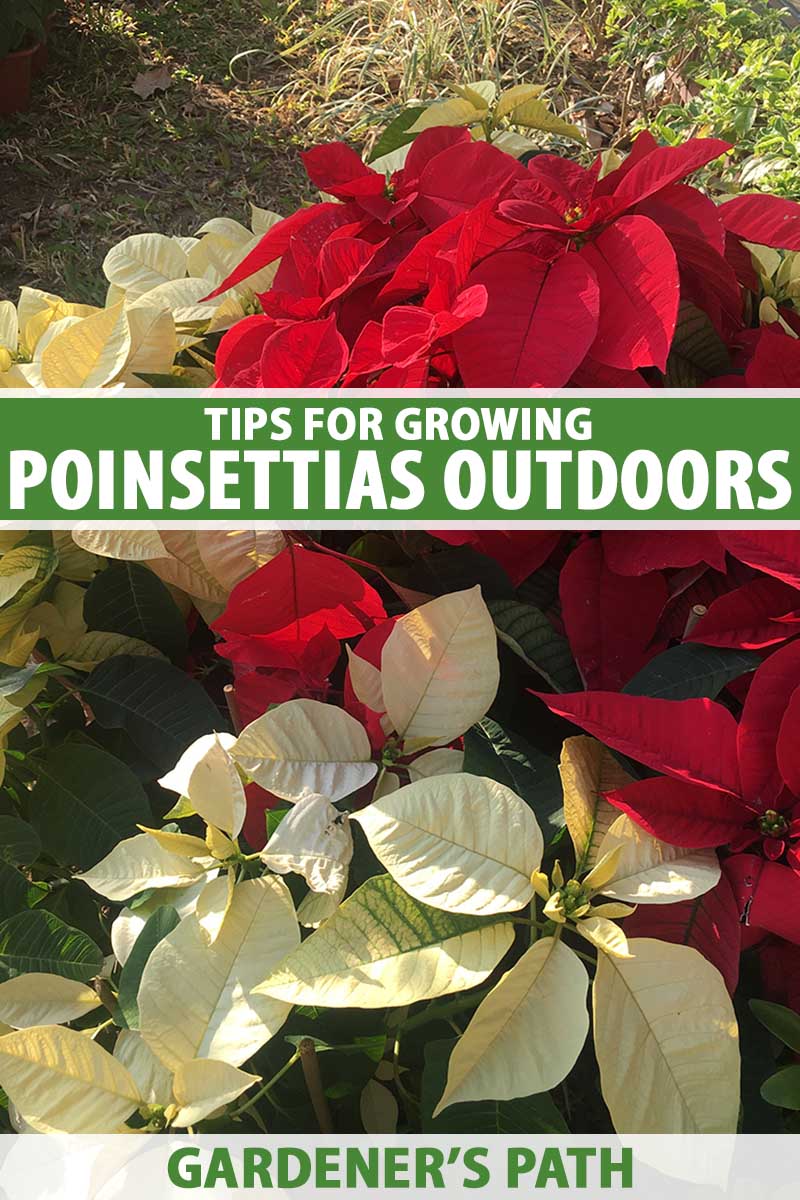
We link to vendors to help you find relevant products. If you buy from one of our links, we may earn a commission.
It seems like Christmas decorations go on sale earlier and earlier each year. In my old-fashioned opinion, it’s pretty disheartening to find holiday wreaths and Saint Nick inflatables sold alongside Halloween costumes.
Plus, on top of all that holiday consumerism, hearing Mariah Carey’s “All I Want for Christmas Is You” blaring over the radio on November first is just another sprinkling of salt in the wound.
But perhaps this slow march towards celebrating the holidays year-round is inevitable… so I suppose “if you can’t beat ’em, join ’em” applies here.
But instead of putting out Christmas lights come summertime, wouldn’t you rather decorate your garden with something a bit more botanical?
Whether you wish to celebrate Christmas in July, or simply need some gorgeous greenery for your summer landscape, Euphorbia pulcherrima has you covered.
This guide will walk you through exactly how to cultivate poinsettias outdoors for peak aesthetics and health.
Here’s what we’ll be covering:
What You’ll Learn
Is Outdoor Cultivation Even Possible?
The answer might have been spoiled above, but… believe it or not, it is! Good thing, too – otherwise we’d have to end the guide right here, which would be a bit of a letdown. But it’s important to note that poinsettia cold tolerance is limited.
E. pulcherrima can withstand outdoor conditions in USDA Hardiness Zones 9 to 11, and can be found growing wild from Mexico to Guatemala. But don’t assume that it merely scrapes by as a meager shrub. In nature, these guys can grow 10 to 20 feet tall!
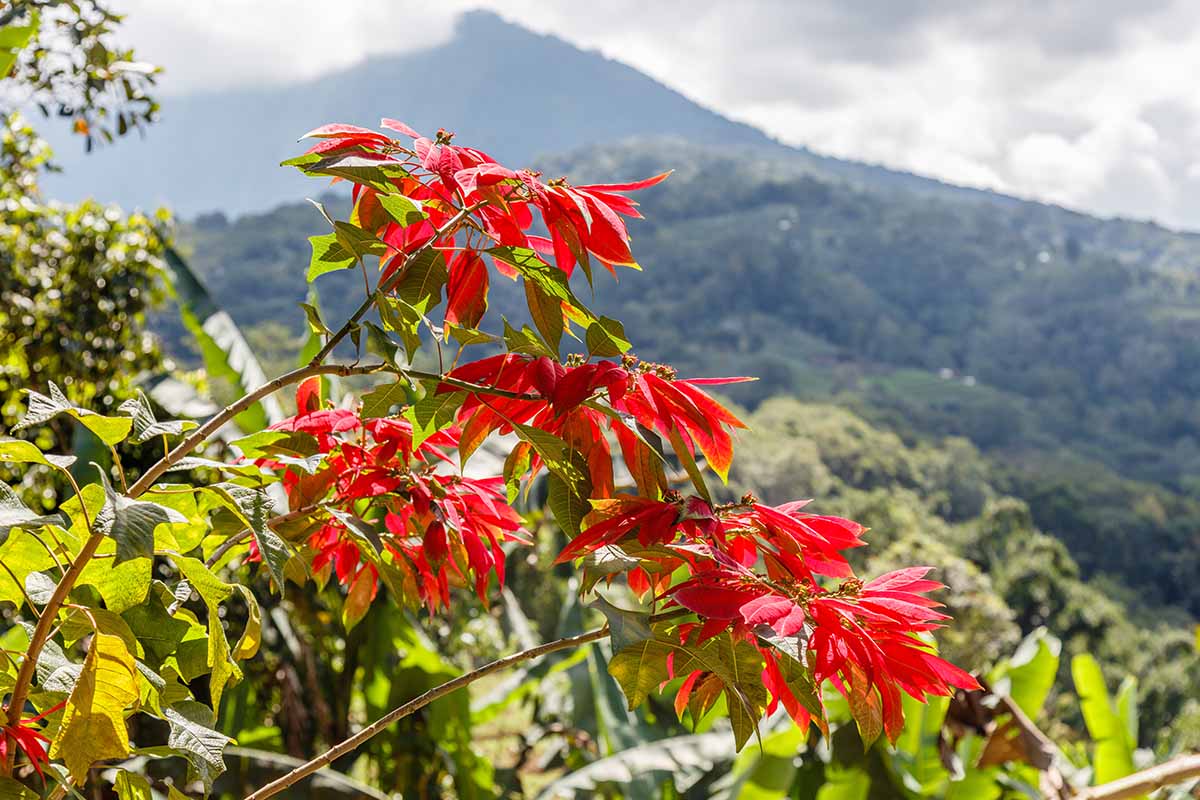
So it’s definitely possible to take care of them in your yard, provided that they’re given the proper outdoor conditions.
For those with gardens within Zones 9 to 11, you’ll want to transplant them in early spring. Location-wise, choose a spot with full sun exposure during the day, and complete darkness at night.
The latter is a prerequisite for producing colorful bracts once nighttimes lengthen, so keep your poinsettias away from porch and street lights or illuminated windows.
Come transplanting time, dig a hole in well-draining soil that’s a foot wider and half a foot deeper than the plant’s root system. Transplant the poinsettia, backfill the hole, firm down the soil, then water in well.
Keep maintaining soil moisture indefinitely as needed, and apply about three ounces of balanced granular fertilizer per square foot of the planting area each month until autumn, or according to package directions.
In order to promote the strongest colorful bracts possible, you should pinch back each stem to just three or four leaves whenever the specimen reaches a foot tall throughout the growing season. Otherwise, you’re free to let the plant grow naturally!
By October, your poinsettia should start to bloom with tiny, inconspicuous flowers at the center of bracts in a beautiful color that persists all winter long!
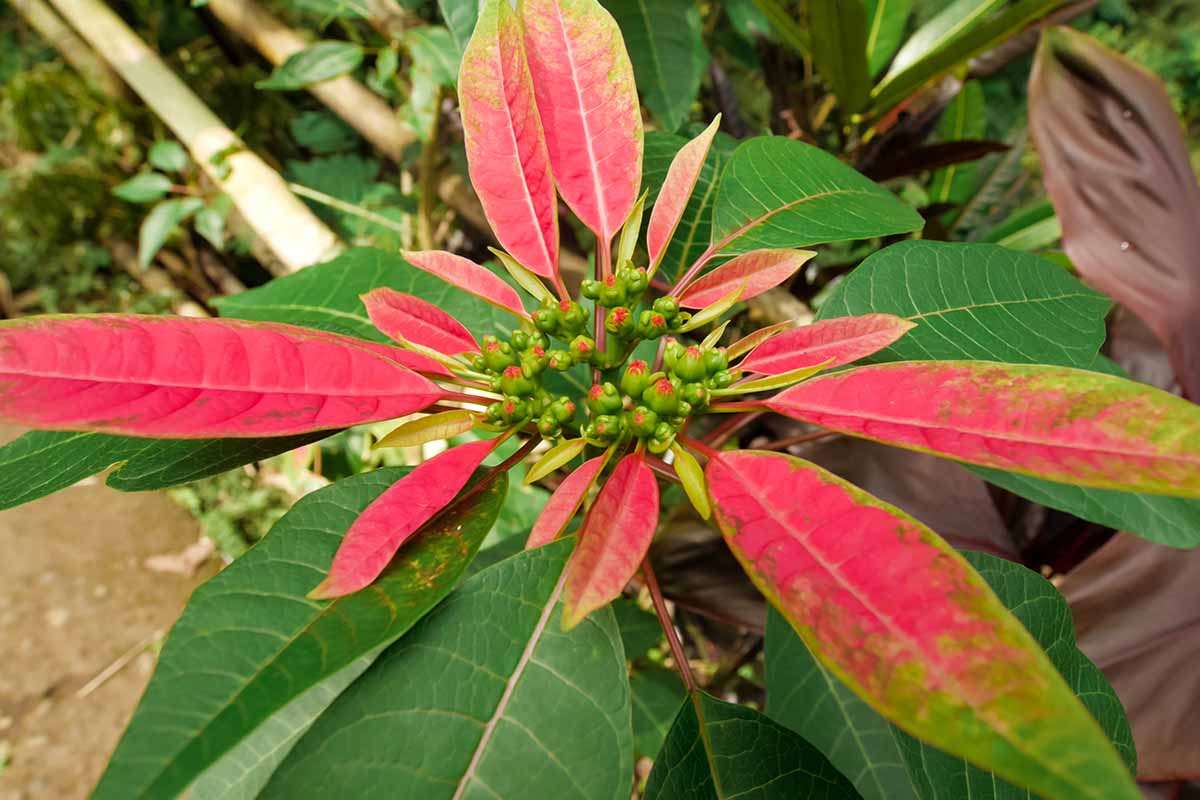
The muddy green color typical of the leaves will generally return by spring at which point you can continue the cycle of care all over again.
Since pinching back or pruning these plants will result in the leakage of a latex sap, you should wear gloves to protect your hands.
Additionally, keep in mind that tall poinsettias can leak the sap onto people who pass by underneath the tree… so plan your route and headgear appropriately.
When and How to Bring Potted Plants Outside
Unless you live in Zones 9 to 11, where E. pulcherrima can survive outdoors year-round, it’s probably best to keep your poinsettia in a pot.
If you prefer the in-ground look they can be buried in their containers or transplanted directly into the garden, but just know that once the temperature drops, they’ll probably need to be removed and/or potted up again to bring indoors.
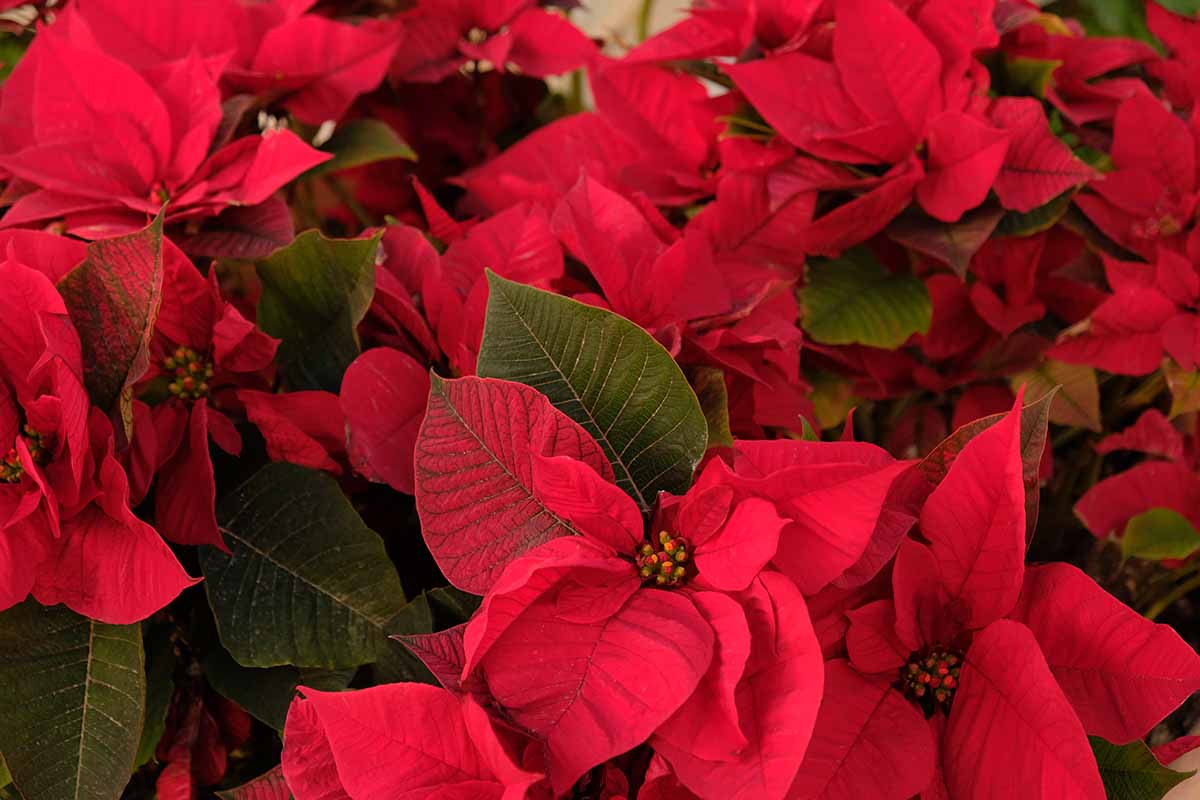
Speaking of which, 50°F is the minimum temperature that you should keep in mind for outdoor exposure. A poinsettia will drop its leaves prematurely when it’s colder than 50°F out, while frost and subfreezing temperatures can kill these plants.
Dreaming of a white Christmas is great for people bundled up in coats and scarves on merry and bright days, but not so much for E. pulcherrima.
This temperature minimum is well worth remembering, because it’s safe to bring potted poinsettias outside as soon as temperatures remain consistently above 50°F.
You’ll need to harden off the plant first by leaving it in a shady spot for a couple of days before exposing it to an hour of sunlight one day.
Add an hour of sun exposure to each following day until it is hardened enough to handle a full day’s worth of direct sunlight.
Draping some burlap or polypropylene fabric (aka frost cloth) over these plants during any surprise temperature dips in warm growing zones can also help protect them from cold damage.

This lightweight and breathable plant cover that’s available on Amazon can be cut into pieces of the appropriate size for shielding plants from any out-of-left-field bouts of cold.
Be sure to keep an eye on the weather forecast if you are on the cusp of poinsettia’s appropriate range and a rare cold snap is looming. Cover plants before the sun sets, and remove cover the following morning when the weather warms.
How to Care for Poinsettia Outdoors
Now that your poinsettia is acclimated to its new home, you gotta treat it right.
For potted specimens in Zone 8 and points further north, this means irrigating whenever the soil surface feels dry and fertilizing every three weeks during the spring and summer months.
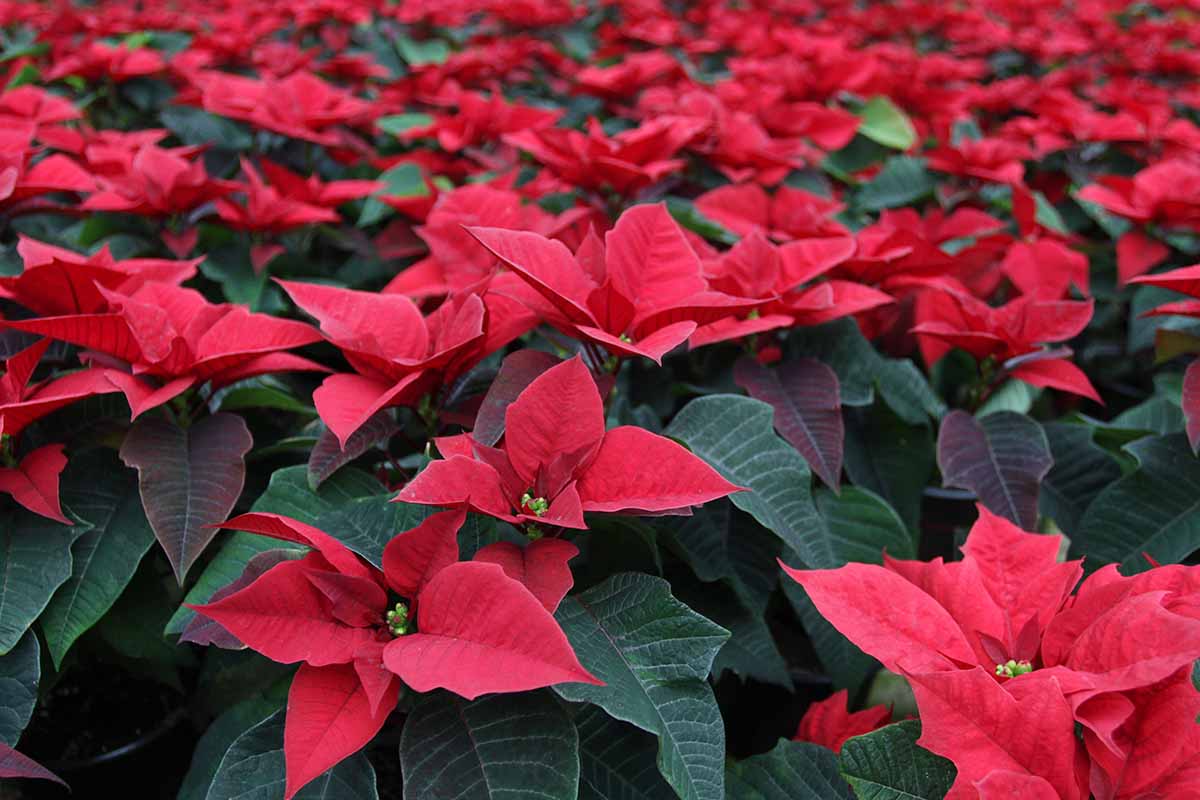
For the former task, water deeply and thoroughly until water runs out of the drainage holes. Be sure to empty any saucers placed beneath plants promptly.
For the latter, utilize an all-purpose houseplant fertilizer diluted to half strength, such as Miracle-Gro liquid indoor plant food that’s available from Amazon in two-packs of eight-ounce bottles.

If you intend to bring your E. pulcherrima back indoors when the temperature drops, you might want to prune this rapidly-growing plant during its time spent outdoors so that it will fit back inside your home.
When the striking bracts lose their color and fade to green, snip the stems back above their nodes to a height of eight inches to encourage bushy growth and a colorful show later in the year. Come early July, cut the branches down again, to half their height.
If your poinsettia suffers any inadvertent cold damage, it’s also important to prune any frost-damaged foliage and take steps to prevent further exposure.
Winter Care in Cold Zones
If your planting site is in Zones 9 to 11, feel free to skip this bit. Except in the case of an unexpected severe cold snap, your plants will be fine outside in these warm regions.
For everyone else, once outdoor temperatures start to drop to 50°F again, a poinsettia’s summer getaway is over. Time for it to go back home!
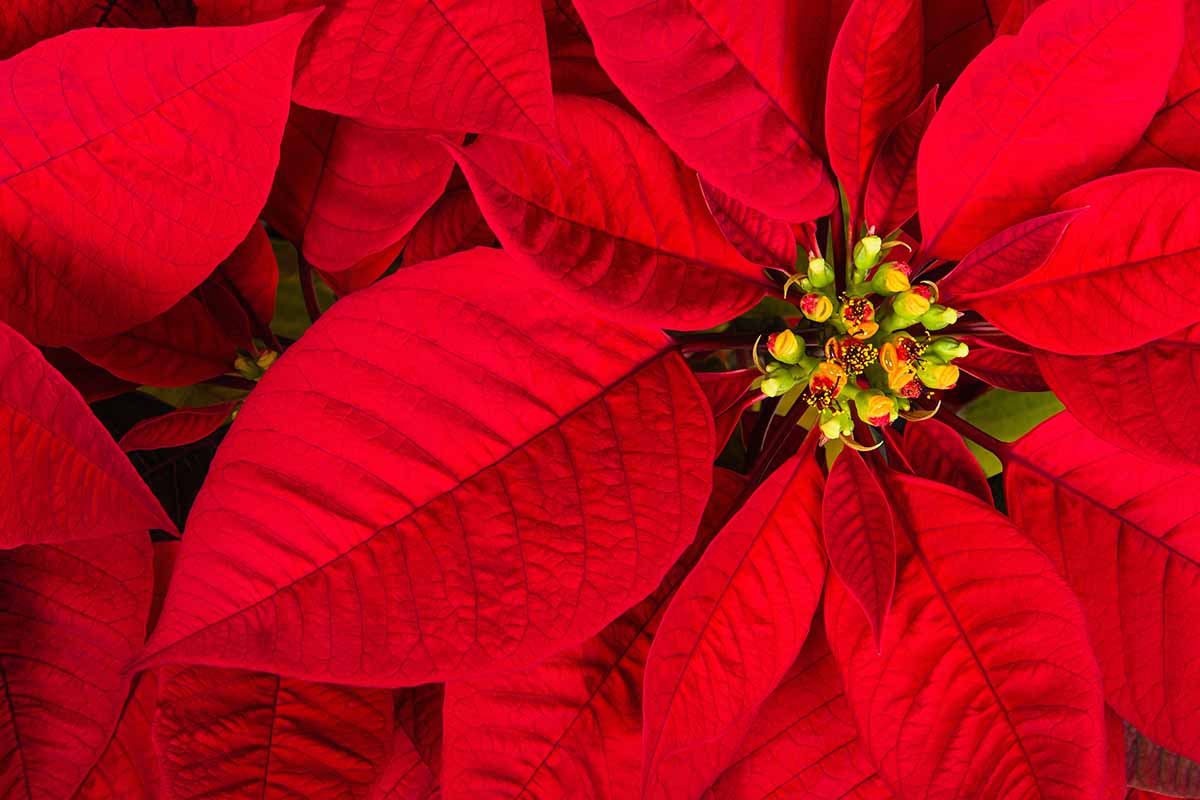
Check the weather in advance to prepare for this eventuality, and keep an eye on the forecast. As soon as nighttime temperatures start with a 5, get ready!
That’s what the plant covers are for: they can provide in-ground plantings with emergency protection from surprise chills.
Pots can simply be moved back inside after checking the plants for pests and any signs of infection. But any in-ground plants will have to be transplanted into containers filled with a well-draining medium.
Make sure to dig carefully to avoid damaging the roots, and be sure to clean the exterior of any pots that you bring indoors as well… dirt as well as pests may be hiding there too, and you wouldn’t want to track your garden inside!
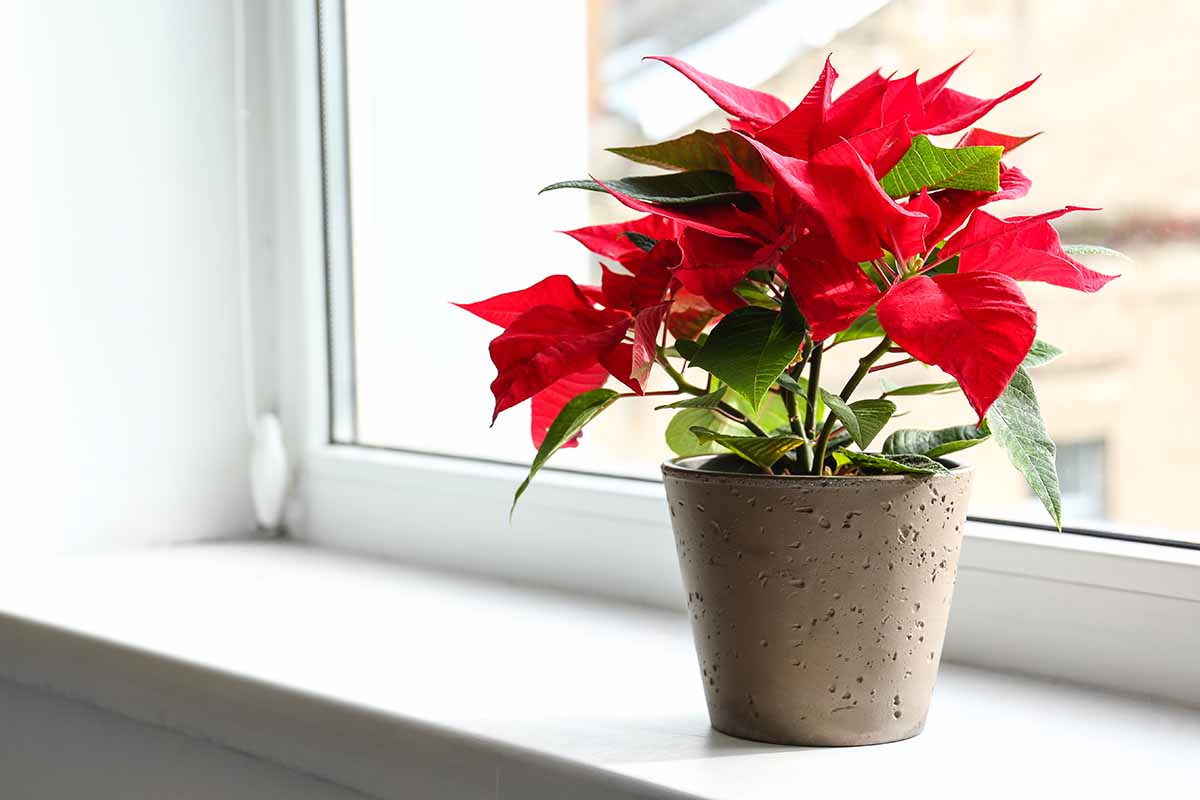
Once your E. pulcherrima is back indoors in its ideal placement, feel free to pat yourself on the back. Ya done did it!
Deck More Than Just the Halls
Now that you understand the ins and outs of growing poinsettias outside, you can adorn your outdoor spaces with botanical splendor.
The porch, near the fence, along a walkway – the outdoor options are limitless in full sun areas that are warm enough for these plants to be happy.
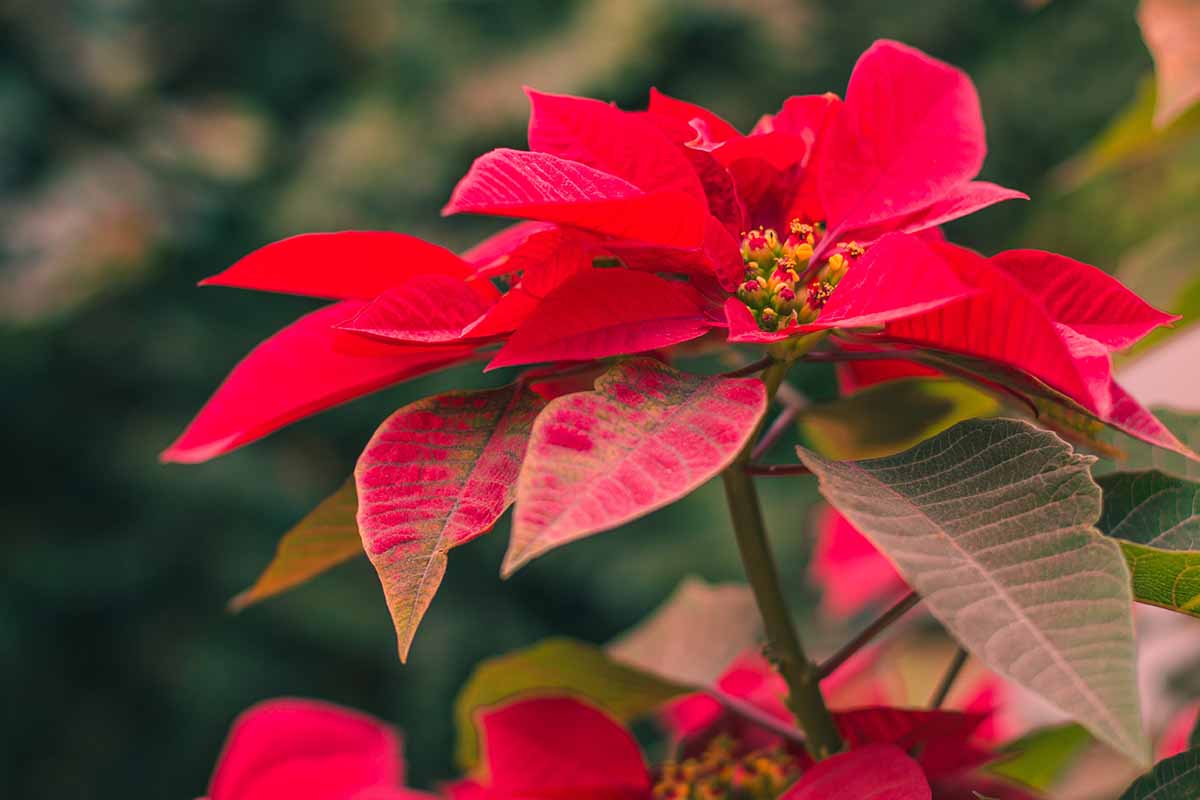
With some practice and experience under your belt, transferring plants outdoors and back in again for the winter will become second nature for those in cooler areas.
Cold snap snuck up on you? Don’t waste time kicking yourself for mistakes, but learn from them instead. There’s always next season!
Have any burning questions or thoughts to share? The comments section below is your oyster.
Has this guide sparked your curiosity about poinsettias? Check out these E. pulcherrima guides next:
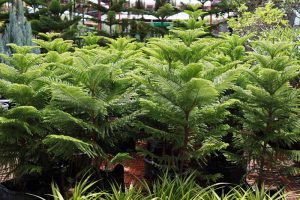
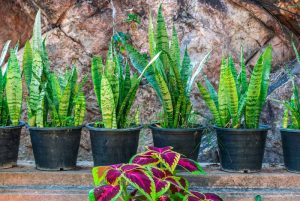

I live in central Florida zone 9. We usually get a few days below freezing. I have two poinsettias that I planted in my yard after the last freeze in the spring. I have pinched them back some and they are now 3 feet tall and wide. I have had so much fun watching them grow and hope that they will bloom, but just experimenting with them for fun. I don’t want to bring them in, but I’m wondering if I need to cover them when the weather gets below 50 degrees. Or, should I try to put a portable… Read more »
Hello, Kirstine! I’m so glad you’ve enjoyed your outdoor poinsettias! So you’ve got a bit of a conundrum… you want to keep your outdoor poinsettias alive, but you’d rather not uproot 3′ by 3′ shrubs and bring them indoors. Totally understandable! I wouldn’t recommend placing space heaters nearby, though. At best, that could combust nearby oxygen and make it unusable for the plants. At worst, that could cook your specimens, or at least the portions closest to the heater. Correctly draping a plant blanket over a poinsettia and its soil can definitely help it to conserve heat, but how much… Read more »
I’m confused. I keep reading that the Nochebuena flower can tolerate zone 9. Then it says freezing temps will kill the plant. Well, Zone 9 temps go down into the 20s. So which is it? Zone 9 or freezing temps?
Thanks for the question, Tim! Freezing temperatures can indeed kill the plant, but I failed to mention that poinsettias can technically survive slight frosts into that 20-30 degree range (although temps that low will be pretty rough on the plant). The 50 degree recommendation was simply for maximum aesthetics, since the sub-50s can cause some unattractive leaf drop.